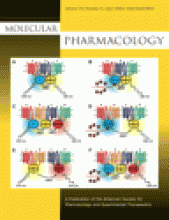Abstract
The Izh2p protein from Saccharomyces cerevisiae belongs to the newly characterized progestin and adipoQ receptor (PAQR) superfamily of receptors whose mechanism of signal transduction is still unknown. Izh2p functions as a receptor for the plant PR-5 defensin osmotin and has pleiotropic effects on cellular biochemistry. One example of this pleiotropy is the Izh2p-dependent repression of FET3, a gene involved in iron-uptake. Although the physiological purpose of FET3 repression by Izh2p is a matter of speculation, it provides a reporter with which to probe the mechanism of signal transduction by this novel class of receptor. Receptors in the PAQR family share sequence similarity with enzymes involved in ceramide metabolism, which led to the hypothesis that sphingolipids are involved in Izh2p-dependent signaling. In this study, we demonstrate that drugs affecting sphingolipid metabolism, such as d-erythro-MAPP and myriocin, inhibit the effect of Izh2p on FET3. We also show that Izh2p causes an increase in steady-state levels of sphingoid base. Moreover, we show that Izh2p-independent increases in sphingoid bases recapitulate the effect of Izh2p on FET3. Finally, our data indicate that the Pkh1p and Pkh2p sphingoid base-sensing kinases are essential components of the Izh2p-dependent signaling pathway. In conclusion, our data indicate that Izh2p produces sphingoid bases and that these bioactive lipids probably function as the second messenger responsible for the effect of Izh2p on FET3.
Footnotes
-
This work was supported by the National Institutes of Health National Institute of Diabetes and Digestive and Kidney Diseases [Grant R21-DK074812]; the National Institutes of Health National Institute of General Medical Sciences [Grant GM63265]; and the Department of Veteran's Affairs Merit Review Entry Program.
-
N.Y.V. and B.R.K. contributed equally to the preparation of the manuscript.
-
ABBREVIATIONS: PAQR, progestin and adipoQ receptor; IZH, implicated in zinc homeostasis; d-erythro-MAPP, d-(2-myristoylamino)-3-phenylpropanol; FET, ferric iron transporter; PHS, phytosphingosine; GPCR, G-protein-coupled receptor; PKA, cAMP-dependent protein kinase; LIM, low iron medium; N,N-DMS, N,N-dimethylsphingosine; FB1, fumonisin B1; DMSO, dimethyl sulfoxide; HPLC, high-performance liquid chromatography; TLC, thin-layer chromatography; TM, transmembrane domain; AlkCer, alkaline ceramidase; AMPK, AMP-activated protein kinase; PDK1, phosphoinositide-dependent kinase 1; WT, wild type.
-
↵
 The online version of this article (available at http://molpharm.aspetjournals.org) contains supplemental material.
The online version of this article (available at http://molpharm.aspetjournals.org) contains supplemental material. -
↵1 Current affiliation: Molecular Genetics and Microbiology, University of Florida, Gainesville, Florida.
-
↵2 Current affiliation: Department of Kinesiology, University of Connecticut, Storrs, Connecticut.
-
↵3 Current affiliation: The Center for Regenerative Medicine, The Scripps Research Institute, La Jolla, California.
-
↵4 Current affiliation: HIV Drug Resistance Program, National Institutes of Health, Frederick, Maryland.
- Received June 19, 2008.
- Accepted December 8, 2008.
- The American Society for Pharmacology and Experimental Therapeutics
MolPharm articles become freely available 12 months after publication, and remain freely available for 5 years.Non-open access articles that fall outside this five year window are available only to institutional subscribers and current ASPET members, or through the article purchase feature at the bottom of the page.
|







